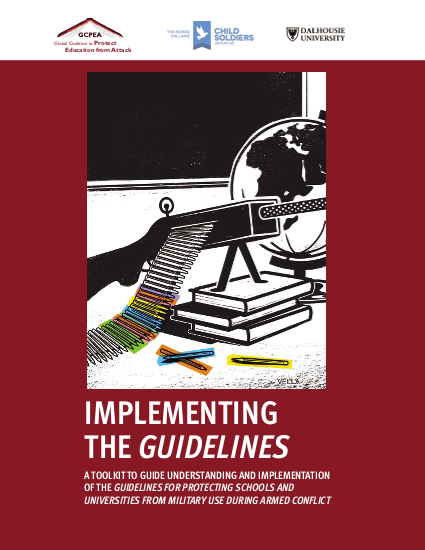
The practice of using schools and universities for military purposes by armed groups and forces endangers these facilities, their students and teachers. Whether used as barracks and training facilities, storage or detention depots (for military-use equipment, materials or detainees), as fighting positions or otherwise for military purposes, this military use of otherwise protected civilian objects potentially converts them into military objectives under international humanitarian law (IHL).
The Toolkit is divided into three broad subject areas, each of which refers to the need to ensure strategic complementarity and coordination between military and civilian actors:
- Training materials
- Materials to guide the planning of military operations
- Materials to guide the execution of military operations
This Toolkit is primarily intended for State military, and para-military forces, deployed or preparing to deploy into areas where armed conflict has or is likely to negatively effect education in general, and schools and universities in particular. As is outlined above, it is intended for PME and pre-deployment training, and will be of benefit to the tactical and operational, as well as strategic levels. Non-State armed forces would also benefit from this Toolkit, as increasingly these forces are being scrutinized by the international community for their conduct within armed conflict.
This Toolkit is further intended to support peace operations ranging from the deployment of individual and small numbers of unarmed military observers, through individual and formed police units, to battlegroup and battalion sized military units. As a teaching tool, it is further expected that the tools will continue to be adapted, improved upon and added to as operational experiences progress and lessons are learned. With this in mind, users of this Toolkit are encouraged to submit feedback and recommendations for further development.
